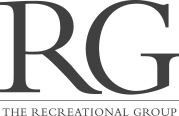Frequently Asked Questions - Playground Surfacing
1. What should I consider when choosing a playground safety surfacing?
According to the National Program for Playground Safety (NPPS), you should consider fall protection, accessibility, maintenance and cost.
2. What are the major types of playground safety surfacing?
There are two major types of surfacing: Loose-fill and Unitary. Loose-fill includes Engineered Wood Fiber (EWF) and Rubber Playground Nuggets (LFR). Unitary includes Bonded Rubber, Poured-in-Place Rubber, Synthetic Turf and Rubber Tiles.
3. What are the major differences between Loose-Fill and Unitary surfacing?
Loose-fill surfacing has a lower initial cost and requires frequent maintenance. Unitary surfacing has a higher initial cost and requires infrequent maintenance.
4. How much do these surfaces cost?
The exact cost depends on several factors including the size of the playground, the fall height of the equipment, the type of material and the type of subsurface.
5. What is a subsurface and do I need one?
A subsurface provides a stable base for the playground safety surfacing and is usually made from concrete, asphalt or compacted stone. Loose-fill surfaces do not require a subsurface while almost all Unitary surfaces do. This makes installing a loose-fill surfacing much simpler and less expensive.
6. Can I install the surfacing myself?
With proper instruction, you can install loose-fill surfaces yourself, while most unitary surfaces need to be installed by trained professionals. When considering who will install the surfacing, remember that an improper installation could reduce the fall protection properties, reduce the life and possibly void the warranty of the surfacing.
















